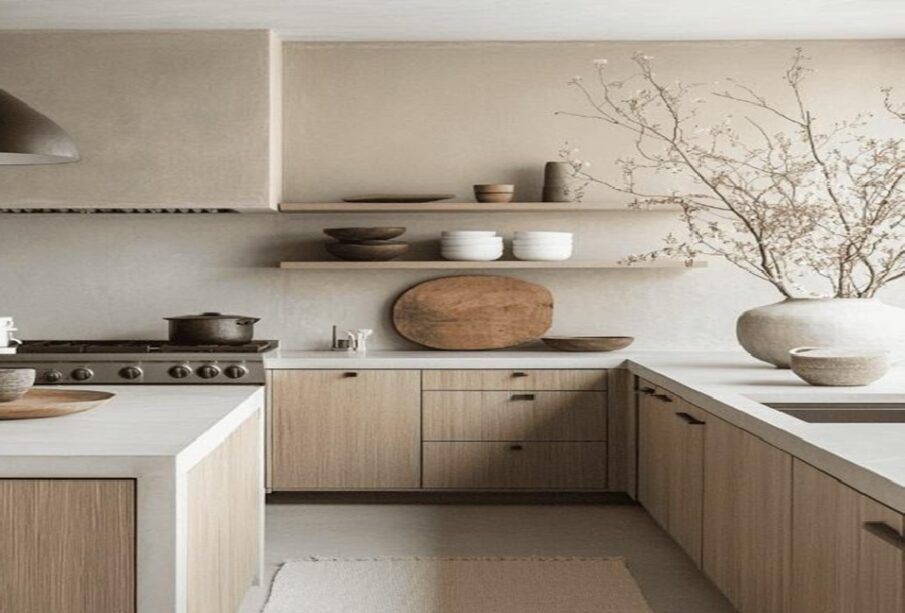How to Build Do It Yourself Kitchen Cabinets Expert Tips and Tricks

Building your own kitchen cabinets might seem like a daunting task, but with the right tools, materials, and guidance, it can be an incredibly rewarding project. Not only do you save on costs, but you also gain the ability to customize your cabinets to perfectly suit your kitchen and personal style. This guide will walk you through the process, from planning and preparation to expert tips for ensuring your Do It Yourself kitchen cabinets are both functional and beautiful.
Why Build Your Own Kitchen Cabinets?
Do It Yourself kitchen cabinets are a significant investment in any home, and building them yourself can provide a cost-effective and personalized alternative to pre-made options.
Benefits of DIY Kitchen Cabinets
- Cost Savings: Do It Yourself kitchen cabinets are typically far cheaper than store-bought or custom cabinets.
- Customization: You can design cabinets to match your kitchen’s layout, color scheme, and storage needs.
- Satisfaction: Completing a hands-on project like this offers a sense of accomplishment and pride in your work.
Challenges to Prepare For
- Time Commitment: Building cabinets from scratch requires time and patience.
- Skill Level: Some woodworking experience is helpful but not mandatory if you follow detailed instructions.
- Tools and Precision: Accurate measurements and proper tools are essential for a successful project.
Essential Tools and Materials
Before starting your project, ensure you have the necessary tools and materials on hand to streamline the process.
Tools You’ll Need
- Saw: A circular saw or table saw for precise cutting of wood panels.
- Measuring Tools: Tape measure, speed square, and a pencil for accurate marking.
- Drill and Screws: For assembly and installing hardware.
- Clamps: To hold pieces steady while assembling.
- Sandpaper: For smoothing edges and surfaces before finishing.
Materials to Choose From
- Plywood or MDF: Ideal for cabinet boxes due to their affordability and durability.
- Solid Wood: Perfect for cabinet doors and visible areas, adding a high-quality finish.
- Hardware: Hinges, drawer slides, knobs, or handles, depending on your design.
- Paint or Stain: For the final finish to match your kitchen’s aesthetic.
Planning and Designing Your Cabinets
A strong plan is the foundation of any successful Do It Yourself kitchen cabinets project. Spending time on the design phase can save you from costly mistakes later.
Measuring Your Space Accurately
- Measure the dimensions of your kitchen, accounting for appliances, countertops, and windows.
- Plan for standard cabinet sizes or customize dimensions to fit your space perfectly.
Sketching a Design Plan
- Create a detailed layout, including the number and size of cabinets needed.
- Decide on the type of cabinets you want, such as base cabinets, wall-mounted cabinets, or pantry units.
Choosing a Style
- Opt for a design that complements your kitchen theme, such as modern minimalist, shaker, or farmhouse.
- Consider whether you want open shelving, flat-panel doors, or decorative features.
Step-by-Step Guide to Building Kitchen Cabinets
Building Do It Yourself kitchen cabinets involves several stages, each requiring attention to detail for a professional finish.
Step 1: Cut and Assemble the Cabinet Box
- Cut panels for the box, back, and shelves using a saw.
- Assemble the box by joining the panels with screws and wood glue, ensuring the structure is square and sturdy.
- Add internal shelves based on your storage needs.
Step 2: Build and Attach Doors and Drawers
- Craft flat-panel doors for a sleek, modern look or shaker-style doors for a more traditional design.
- Assemble drawers using box joints or screws, and install durable drawer slides for smooth operation.
Step 3: Sand and Finish the Cabinets
- Sand all surfaces thoroughly to remove rough edges and imperfections.
- Apply primer, then paint or stain to achieve the desired color and finish.
- Use multiple coats for durability, allowing each coat to dry completely.
Step 4: Install Hardware and Hinges
- Attach hinges to the cabinet doors and align them carefully to the box.
- Add handles or knobs, ensuring they are positioned evenly for a polished look.
Expert Tips for a Successful DIY Cabinet Project
The difference between a good DIY project and a great one often lies in the details. Here are expert tips to help your project stand out.
Use High-Quality Materials
Invest in sturdy wood and reliable hardware to ensure your cabinets are durable and long-lasting. Quality materials also improve the final appearance of your project.
Invest in the Right Tools
Using the proper tools, such as a high-quality saw and clamps, can save time and improve the accuracy of your work. Borrow or rent tools if you don’t have them at home.
Take Your Time
Rushing through the steps can lead to mistakes or uneven finishes. Allocate enough time for each stage, especially sanding and painting, to achieve a professional result.
Practice on Scrap Materials
If you’re new to woodworking, practice cuts and assembly on scrap wood before working on your actual materials. This will help you perfect your technique.
Common Mistakes to Avoid
Even experienced DIYers can run into pitfalls. Avoid these common mistakes for a smoother project.
Skipping the Planning Phase
Failing to measure or plan properly can lead to ill-fitting cabinets. Take the time to map out your design thoroughly.
Ignoring Proper Assembly Techniques
Ensure all joints are square, and use clamps to keep pieces steady during assembly. Skipping this step can result in wobbly or uneven cabinets.
Using Low-Quality Finishes
Invest in durable paints or stains to protect your cabinets from wear and tear. A high-quality finish also enhances the appearance of your cabinets.
Finishing Touches and Installation
Once your cabinets are built, it’s time to install them and add decorative elements for a cohesive Do It Yourself kitchen cabinets design.
Installing Your Cabinets in the Kitchen
- Secure base cabinets to the wall, ensuring they are level.
- Mount upper cabinets using a stud finder to attach them securely to the wall.
Adding Decorative Touches
- Consider crown molding, toe kicks, or under-cabinet lighting for a polished finish.
- Match cabinet hardware with your kitchen’s theme, such as matte black for a modern look or brass for a vintage touch.
Conclusion
Building your own Do It Yourself kitchen cabinets is a rewarding project that allows you to create a custom look tailored to your space and preferences. With careful planning, quality materials, and attention to detail, you can achieve professional results at a fraction of the cost of store-bought cabinets.
By following the expert tips and tricks in this guide, you’ll be well on your way to crafting beautiful, functional cabinets that elevate your kitchen’s style. Embrace the challenge, and enjoy the satisfaction of bringing your vision to life with a DIY project you can be proud of.










